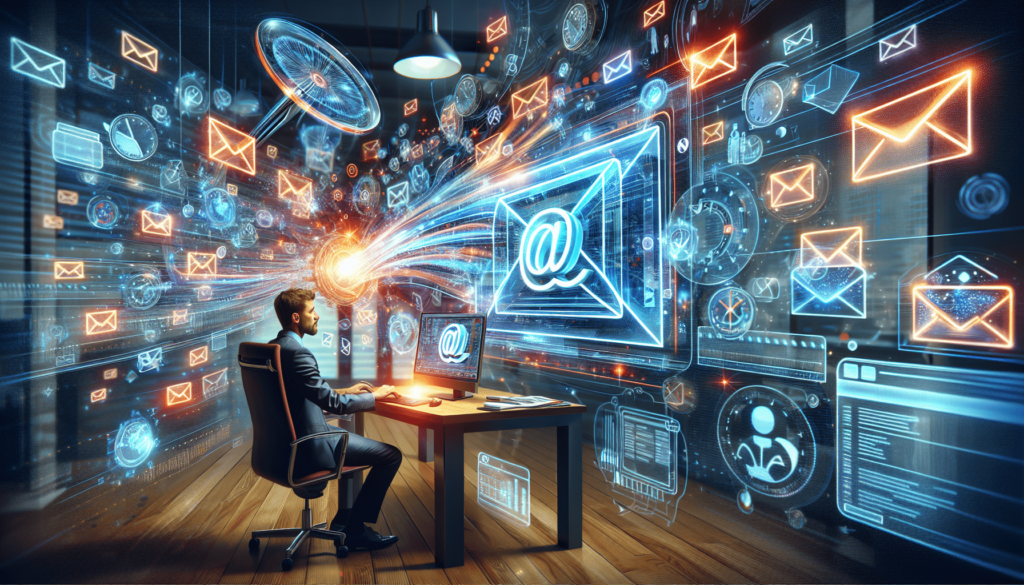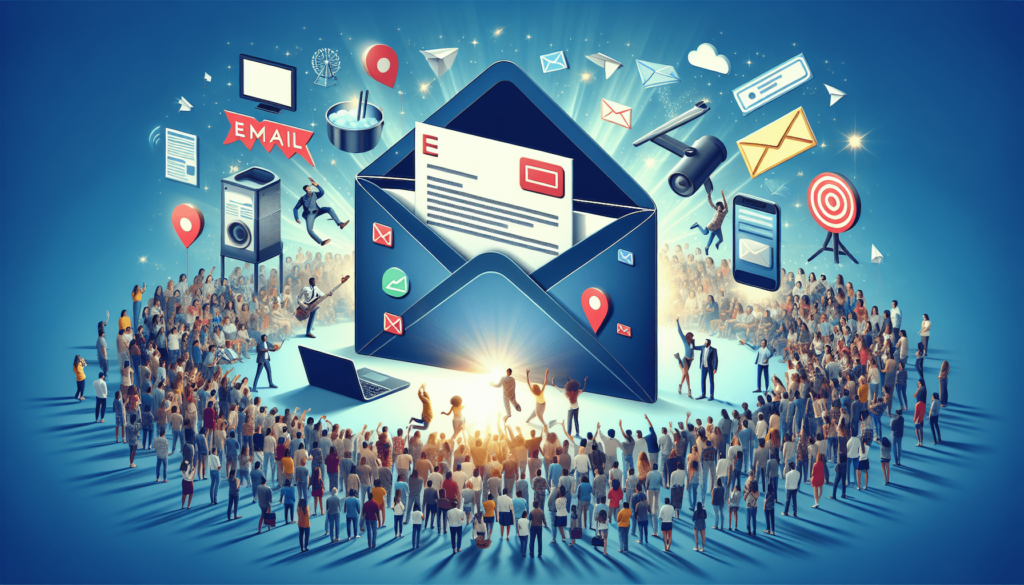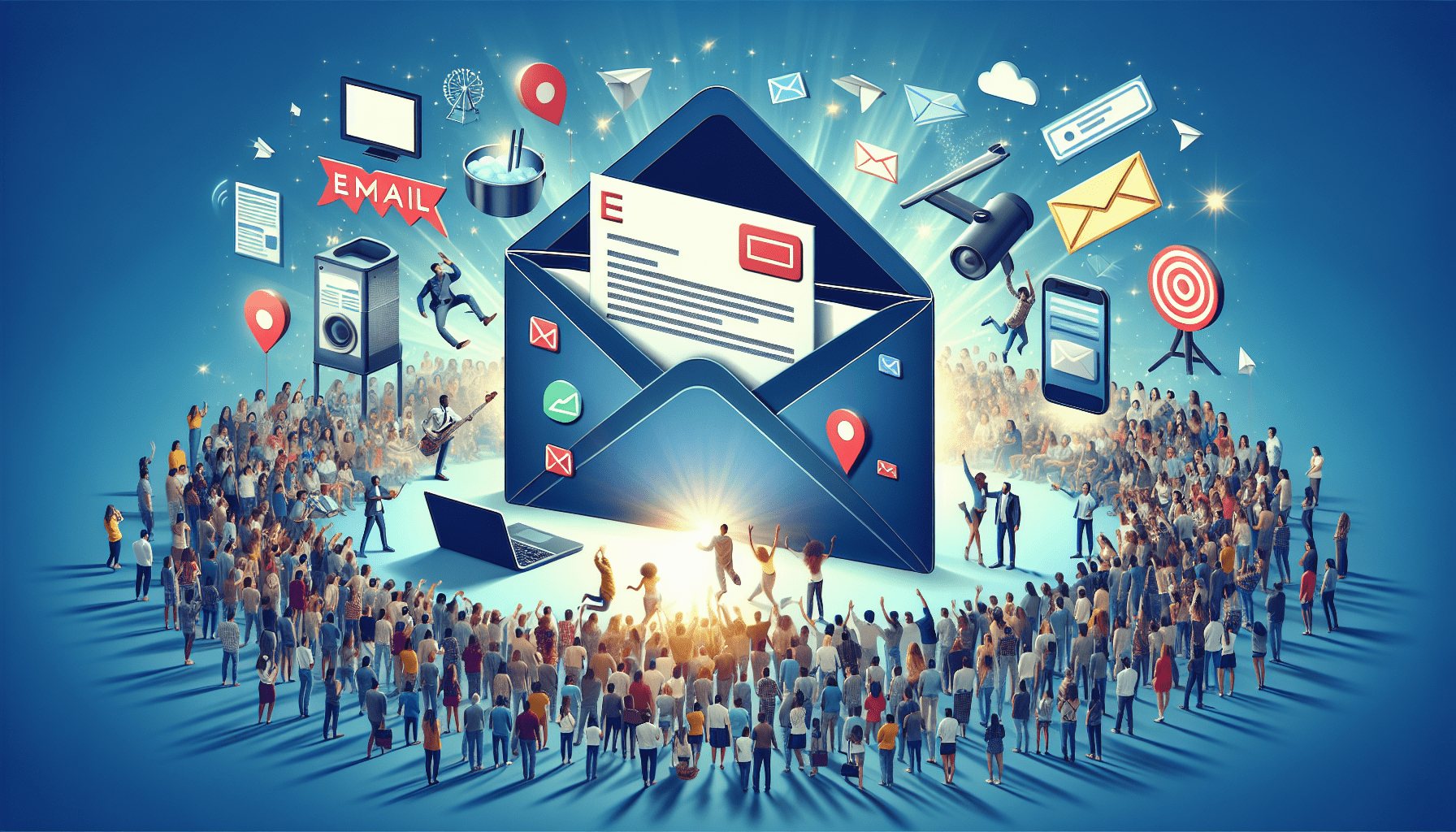Are you looking for an effective way to boost attendance and engagement for your upcoming event? Look no further than email marketing. With its wide reach and personal touch, email marketing has become a powerful tool for event promotion. By crafting compelling emails that highlight the key details of your event and engaging your audience with interactive content, you can drive attendance and create a buzz that will ensure your event’s success. In this article, we will explore the importance of email marketing for event promotion and provide you with valuable tips on how to leverage this powerful tool effectively.

Importance of Email Marketing for Event Promotion
Email marketing is a highly effective strategy for promoting events and increasing attendance. It allows you to reach a wider audience, increase attendee engagement, and ultimately drive the success of your event. In this article, we will explore the various reasons why email marketing is crucial for event promotion and provide you with practical tips and techniques to make the most out of your email campaigns.
Reach a wider audience
One of the greatest advantages of email marketing is its ability to reach a wide and diverse audience. By building an email list, you can communicate directly with your target audience, delivering event updates, promotions, and important information right to their inbox. Unlike other marketing channels, email provides a more personal and direct connection with your audience, increasing the chances of them engaging with your event.
Increase event attendance
Email marketing is a powerful tool for driving event attendance. By sending targeted and personalized emails, you can capture the attention of potential attendees and entice them to register for your event. By crafting compelling email copy that highlights the unique value and benefits of attending your event, you can create a sense of excitement and urgency, motivating recipients to take action.
Increase attendee engagement
Engaging and interacting with your event attendees is crucial for creating a memorable and successful experience. Email marketing allows you to communicate with attendees before, during, and after the event, keeping them informed, excited, and engaged. By sending reminders, exclusive offers, and post-event surveys, you can maintain a strong connection with attendees and encourage them to actively participate in your event.
Building an Email List
Building a robust email list is the first step towards a successful email marketing campaign for your event. A high-quality and targeted email list ensures that your messages reach the right audience, maximizing the impact of your promotions. Here are some effective strategies to build your email list:
Create a sign-up form
Create a sign-up form on your event website or landing page to capture email addresses of visitors who are interested in your event. Place the form prominently and make it easy for visitors to see and complete. Keep the form simple and only ask for essential information like name and email address to maximize sign-ups.
Offer incentives for sign-ups
Encourage visitors to sign up for your email list by offering incentives such as exclusive discounts, early access to event information, or free resources related to your event. Providing value upfront increases the likelihood of visitors sharing their email addresses and becoming valuable subscribers.
Promote sign-up through various channels
Promote your email sign-up form through various channels to maximize your reach and attract a diverse audience. Use social media platforms, blog posts, guest articles, and networking events to promote your event and encourage people to sign up for updates via email. The more channels you utilize, the more opportunities you create to capture potential attendees’ email addresses.
Segmenting Your Email List
Segmenting your email list is an essential step towards delivering personalized and targeted content to your subscribers. By segmenting your list, you can send tailored messages to specific groups of subscribers based on their demographics, behavior, or interests. Here are some segmentation strategies to consider:
Demographic segmentation
Segment your email list based on demographic criteria such as age, gender, location, or industry. This allows you to create more targeted content that resonates with specific segments of your audience. For example, if you are organizing a technology conference, you may want to send specialized content to tech professionals while tailoring another set of emails for entrepreneurs.
Behavioral segmentation
Segment your list based on subscriber behavior, such as previous event attendance, level of engagement with your emails, or interactions with your website. This helps you identify highly engaged subscribers who are more likely to convert into attendees. You can then send them personalized offers, reminders, or recommendations based on their past behavior.
Interest-based segmentation
Segment your list based on subscribers’ interests or preferences. This can be done by analyzing their past interactions, survey responses, or preferences indicated during the sign-up process. By tailoring your email content to match the interests of specific segments, you can increase their engagement and encourage them to attend your event.
Creating Engaging Email Content
Creating engaging email content is crucial to capturing the attention of your subscribers and motivating them to take action. Here are some tips to make your email content more compelling:
Use catchy subject lines
Craft subject lines that grab attention and entice recipients to open your email. Use action words, urgency, and curiosity to create a sense of anticipation. Avoid generic subject lines and focus on providing a glimpse of the value or information your email offers.
Personalize emails
Personalization is key to creating a personalized experience for your subscribers. Use merge tags to include their name in the email greeting and tailor the content to match their preferences or past interactions. Personalized emails make recipients feel valued and increase their engagement with your event.
Include visual elements
Incorporate eye-catching visuals like images, videos, or infographics in your emails to enhance readability and make your content more engaging. Visual elements capture attention and leave a lasting impression on recipients. However, make sure the visuals are relevant, clearly aligned with your event’s brand, and not overwhelming.

Designing Effective Email Templates
Designing effective email templates is essential to ensure consistency and professionalism across your email campaigns. Here are some tips for designing impactful email templates:
Keep the design clean and professional
Opt for a clean and professional design that aligns with your event branding. Use a cohesive color scheme, select readable fonts, and incorporate your event’s logo or other relevant graphics. A clutter-free design enhances readability and leaves a positive impression on recipients.
Include a clear call-to-action
Every email should have a clear and prominent call-to-action (CTA) that guides subscribers towards taking the desired action, such as registering for the event or accessing more information. Use attention-grabbing buttons or hyperlinked text to make the CTA stand out. Be specific and use action-oriented language to encourage a higher click-through rate.
Optimize for mobile devices
With the increasing use of smartphones, it is crucial to optimize your email templates for mobile devices. Ensure that your emails are responsive and display well on different screen sizes. Use a mobile-friendly layout, large fonts, and easily tappable buttons to provide a seamless experience for mobile users.
Crafting Compelling Email Copy
The email copy plays a pivotal role in persuading subscribers to take action and attend your event. Here are some tips for crafting compelling email copy:
Write clear and concise copy
Keep your email copy concise and to the point. Use clear and simple language that conveys the key information effectively. Avoid jargon or complex sentences that may confuse or bore your readers. Break up the content into easily scannable sections to improve readability.
Highlight the benefits of attending the event
Focus on the unique benefits and value that attendees will gain by participating in your event. Highlight the learning opportunities, networking prospects, or exclusive experiences they can expect. By emphasizing the value they will receive, you create a persuasive argument for attending.
Create a sense of urgency
Motivate subscribers to take immediate action by creating a sense of urgency in your email copy. Use phrases like “limited seats available,” “early bird discounts ending soon,” or “exclusive offer for a limited time.” By instilling a sense of urgency, you encourage prompt registration and reduce the chances of subscribers procrastinating.
Sending Targeted Email Campaigns
Sending targeted email campaigns ensures that your messages are relevant and resonate with specific groups of subscribers. Tailoring your emails based on different stages of the event lifecycle can significantly impact attendance and engagement. Here are some targeted email campaigns to consider:
Send reminders to registered attendees
As the event date approaches, send reminders to registered attendees to keep them informed and excited. Reminders can include essential event details, agenda updates, or helpful tips to make the most out of the event experience. Reminders reinforce attendance and help attendees plan for a seamless and enjoyable event.
Send exclusive offers to potential attendees
To entice potential attendees who may be on the fence, consider sending exclusive offers or discounts via email. Create a limited-time offer that encourages quick action, such as a discounted registration fee, early access to sessions, or complimentary add-ons. Exclusive offers show your appreciation for their interest and may incentivize them to attend.
Send post-event surveys
After the event, gather feedback by sending post-event surveys to attendees. Email is an effective way to capture valuable insights and identify areas for improvement. Craft well-designed surveys that are easy to complete and offer incentives like entry into a prize draw or discounts for future events. Post-event surveys help you gauge attendee satisfaction and make informed decisions for future events.
Optimizing Email Delivery
Optimizing email delivery is essential to ensure that your emails reach the intended recipients and avoid being marked as spam. Here are some strategies to optimize email delivery:
Maintain a healthy sender reputation
Your sender reputation significantly impacts the deliverability of your emails. Ensure that you comply with anti-spam regulations, use a reputable email service provider, and monitor your email performance. Avoid using email lists with low engagement rates or purchasing email lists, as this may harm your sender reputation.
Avoid spam triggers in email content
Craft your email content carefully to avoid triggering spam filters. Avoid excessive use of capital letters, exclamation marks, or spam trigger words commonly used in promotional emails. Use a reputable spam checker tool to analyze your emails before sending them to identify any potential spam triggers.
Ensure email deliverability
To improve email deliverability, verify the email addresses in your list and remove any invalid or inactive addresses. Regularly clean your email list to maintain high deliverability rates and reduce the chances of your emails bouncing or getting marked as spam. Test your emails before sending them to ensure they reach the inbox instead of the spam folder.
Tracking and Analyzing Email Performance
Tracking and analyzing the performance of your email campaigns is essential to measure their effectiveness and make data-driven improvements. Here are some key metrics to monitor:
Monitor email open rates
Email open rates indicate how many recipients opened your email. A higher open rate suggests that your subject lines and sender reputation are effective in grabbing attention. Monitor open rates to identify trends and experiment with different subject lines, personalization, or sender names to optimize open rates.
Track click-through rates
Click-through rates measure the number of recipients who clicked on the links in your email. This metric helps gauge the effectiveness of your email content and call-to-action. Analyze the click-through rates to identify high-performing elements in your emails and optimize the content to encourage more clicks.
Analyze conversion rates
Conversion rates show the percentage of recipients who completed the desired action, such as registering for the event, purchasing tickets, or downloading resources. Calculate the conversion rates to understand the effectiveness of your email campaigns. Identify any bottlenecks in the conversion process and optimize your email content and landing pages to improve conversions.
Automation and Personalization
Implementing automation and personalization in your email marketing can significantly enhance the effectiveness of your campaigns. Here are some strategies to consider:
Implement automated email workflows
Set up automated email workflows to nurture your subscribers and guide them through the event journey. For example, send a series of welcome emails to new subscribers, follow up with event details and reminders, and send post-event follow-ups and surveys. Automation saves time and ensures consistent communication with your subscribers.
Personalize email communication
Use the data you have collected to personalize your email communication. Address your subscribers by their names, segment your email content based on their preferences or behavior, and recommend personalized event options based on their previous interactions. Personalization creates a unique and tailored experience that resonates with your audience.
Utilize personalized event recommendations
Leverage the data you have gathered to recommend personalized event options to your subscribers. Based on their interests, previous event attendance, or interactions with your website, suggest relevant upcoming events or sessions that align with their preferences. Personalized recommendations increase the chances of attracting attendees who are genuinely interested in your events.
In conclusion, email marketing is a powerful tool for promoting events, increasing attendance, and engaging with your audience. By building an email list, segmenting it effectively, creating engaging email content, and optimizing your email delivery, you can drive attendance and boost the success of your events. With the right strategies and techniques in place, email marketing can significantly contribute to the growth and success of your event promotion efforts.










